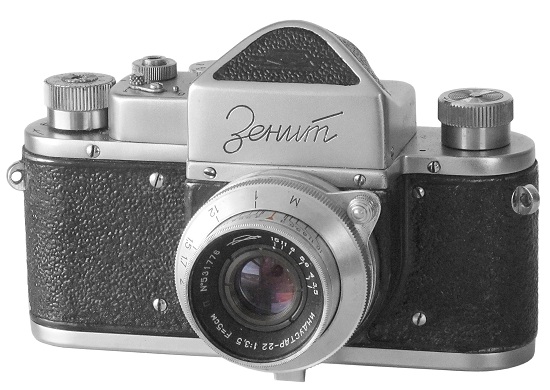The became well respected for both their and the lens manufacture during the 1950s. They had an early start in the 1930s using Nikkor lenses. Their first attempt on a professional camera was the remarkable 1959, also their very first SLR camera, which never became a success despite the high quality build. This time Canon has worked hard to regain a place among the professional camera makers, a position held for a decade. At this time there are no prosperous European camera makers left, although a few still are in business. The Canon way has been a diversified one, manufacturing a wide variety of interesting products for almost every market segment, but they lacked concentration in any one particular direction, at least in terms of cameras. The original was remarkable, but it was not wholeheartedly backed up, and soon it disappeared.

I have a use Canon camera and I want to find the age of the camera by the serial number. A device with a serial number which cannot be registered with Canon in the U.S. Customers should also be aware that Gray Market Products may not be eligible for: coverage under a U.S.
The superb range of Canon FL lens-mount SLR cameras that followed, was not intended for the professional photographer, giving the competition a ten year lead in that field. However, a vast majority of young amateur photographers became acquainted with the, FP, and, or even the famous, and inevitably, some of these would become professional photographers and select a familiar brand. The name Canon F-1 describes two very different cameras: a fully manual model (2 versions: F-1 and F-1n), and a later electronically controlled model. The latter is often termed the New F-1. Finders designed for the F-1 do not fit the New F-1, or vice-versa. The New F-1 is most commonly seen with a finder with an accessory shoe. Thus the simple way to tell the two models apart is by whether or not there is an accessory shoe atop the finder.
Contents [] The Canon F-1 Canon F-1 by Alan Wentworth () The F-1 is a camera introduced in the summer of 1970, together with the new Canon FD lens mount. It became generally available the following year. The fully communicates with the camera, and there is a capable range of lenses to choose from. They are backward compatible with the earlier Canon cameras. The FD lenses have an Automatic position on the aperture ring, at first identified by a green circle, later by a green A. This position is excluded if the lens is on a camera not supporting the automatic mode. The 1 to 1/2000 sec shutter has horizontally running metal foils curtains.
Game Jar Untuk Hp Nokia X2-01 more. The on the Canon F-1 is a remarkable feature. The is neither in the nor behind the mirror, but on the side of the focusing screen, which directs a fraction of the light to it. In this way the meter works independently of the attached finder, dramatically simplifying the viewfinders as well as the metering system in the camera. The beauty of it is the focusing screen with an embedded mirror.
The exposure meter uses the 1. Hp Switch Visio Stencils. 35volt, which fortunately may be replaced, using an ordinary hearing aid battery (1.4volt) that is so cheap that it doesn't matter how long they last. The finder prism is neatly slid on, and focusing screen is easily lifted out. A separately available Servo EE Finder provides automatic exposure using an arm attached to the left-hand side of the finder to operate the lens diaphragm, reached through an elongated tiny door at the left-hand side of the mirror housing. It must be opened using a fingernail before attaching the arm. A separate battery case, equipped with a belt clip, holds the eight required 1.5volt penlight batteries. When they are loaded and all electrical connections established either automatic or manual exposure function is activated using the right-hand switch. The incorporated lever is just added for speedy operation of the meter switch.
The automatically selected aperture is shown on a scale to the right in the finder. This is particularly useful equipment for remote controlled or automatic interval photography used in connection with the Motor Drive MF. This combination weighs 7 lbs, or about 3.2 kg, with eighteen AA batteries and the FD55mm 1:1.2 standard lens. The Motor Drive MF is easily mounted once the camera battery-compartment cover is temporarily removed, and the base plate set aside. It needs ten 1.5volt penlight batteries held inside the large right-hand grip with a soft-touch shutter release button at the top. At the front, under a cover cap, is a socket for interconnecting the Servo EE Finder.
At the back is a Single / Continuous / selector switch and a small lever to operate the rewind release switch. It is only operational when the frame counter next to it is at zero. The continuous mode is only available for fast shutter speeds from 1/60 sec. And upwards to 1/2000 sec. Because the finder is detachable, the accessory shoe is at the side, requiring special attachments. A New Ladder Of Citizen Participation Pdf Printer.